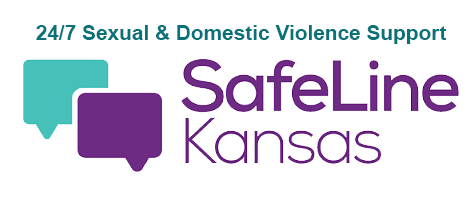Stalking Survivor Information
What Does Stalking Look Like?
Stalking is a pattern of behavior that makes you feel afraid, threatened, or unsafe. It can include unwanted contact, monitoring both in the physical sense of someone following you, or the way someone tracks you and tries to contact you online.
Stalking can include explicit threats, but they don’t have to threaten you for you to be a victim of stalking.
It is not uncommon for someone to try to justify stalking behaviors by blaming you for “making them do it” but stalking is about power and control—and it is never your fault.

Find Help - Locate and Advocate Near You
Protection Order Support
Safety Planning for Leaving Abusive Relationships
What You Can Do If You Were Sexually Assaulted
What You Can Do If You Are Experiencing Domestic Violence
Why Are They Stalking Me?
Anyone can be a victim of stalking. It may happen on its own or alongside other forms of abuse, like domestic violence, dating violence, or sexual violence. Stalking doesn’t always involve a romantic or sexual relationship. It can be carried out by an acquaintance, a stranger, a coworker, or someone you know casually.
Remember, you didn’t do anything to deserve being stalked.
If you feel like someone is watching, tracking, or trying to control your life – we recommend that you speak with an advocate who can help you review what is happening and support you through how you can respond and take steps to safeguard yourself.
If they are threatening you, that can be part of an ongoing controlling or violent domestic abuse or sexually violent experience that has now escalated to include stalking. This is why it is important to understand that just like sexual and domestic violence, stalking is about control. That control is why stalking can occur separately from instances of sexual or domestic violence or be part of a larger abusive situation.
safety Planning can protect you and your loved ones but if you are in immediate danger, contact an Advocate and consider if calling 911 is safe.
Common Examples of Stalking
Repeated unwanted calls, texts, DMs, or emails
Showing up uninvited at your home, work, or school
Following you or tracking your location
Sending gifts, letters, or messages after being told to stop
Using technology or apps to monitor your phone, car, or social media
Threatening you or people close to you
Damaging your property or making threats to do damage if you don't acknowledge their attention
Posting about you online in a way that feels threatening or invasive
Do you need help?
Remember – these examples are to help people who may be experiencing stalking get support and recognize what is happening to them. If you think you are experiencing stalking but don’t see what is happening to you on this list, that doesn’t mean you aren’t being stalked. We try to provide some general examples – speaking with an advocate about what is happening to you is the best way to understand if you are in danger and what resources are available.

Understanding Your Next Steps
Stalking behaviors are often repeated and escalate over time. Even if something seems small or hard to explain, trust your feelings that the behavior is not ok. If it feels wrong, it probably is wrong. Speaking with an advocate about stalking will be confidential and without judgment.
An advocate can also help you understand what your options are for support based on what you are experiencing. Sometimes you can take steps that will protect yourself by making changes to your routine or your online security or you may want to get a protection order or involve law enforcement.
What You Can Do
If you think you are being stalked:
Talk to an Advocate
You don’t have to figure it out alone. Advocates at local sexual and domestic violence programs can help you understand what’s happening, listen without judgment, and support you in making a plan. Whether or not you decide to involve law enforcement, advocates are there to help.
Consider a Protection Order
Stalking is against the law. In Kansas, you may be able to file for a Protection from Stalking, Sexual Assault, or Human Trafficking Order (PFS Order). This legal order can prohibit the person stalking you from contacting or approaching you.
Advocates can walk you through how to request one and what to expect during the process.
Safety Planning
A safety plan is a personalized, practical plan to improve your safety in the moment and going forward. It might include steps like changing routines, saving evidence, or adjusting privacy settings.
You don’t need to wait until something serious happens—safety planning is for anyone who feels unsafe or at risk.
Safe at Home Program
If you are worried about your address being found, Kansas offers a confidential address program called
Safe at Home through the Attorney General’s office. This can help protect your location on public records like voter registration, school enrollment, or legal filings.
You can work with the Kansas Attorney General, Victim Services Division directly or ask an advocate for help with your options. Please consider resources like this as part of a safety plan for yourself.
You Deserve to Feel Safe
Stalking can be isolating and confusing, and many victims worry they won’t be believed. But your fear is real, and it matters. You don’t need to have proof or wait for something “worse” to happen to get support.
Talking to an advocate is a safe first step. Everything you share can be kept confidential, and you remain in control of your choices.
If You’re in Immediate Danger
Call 911 or go to a safe place. You can also call the SafeLine Kansas at 1-888-363-2287—available 24/7, free and confidential. You can also text "SAFE" to 847411 to text with an advocate if that feels safer or more comfortable.










